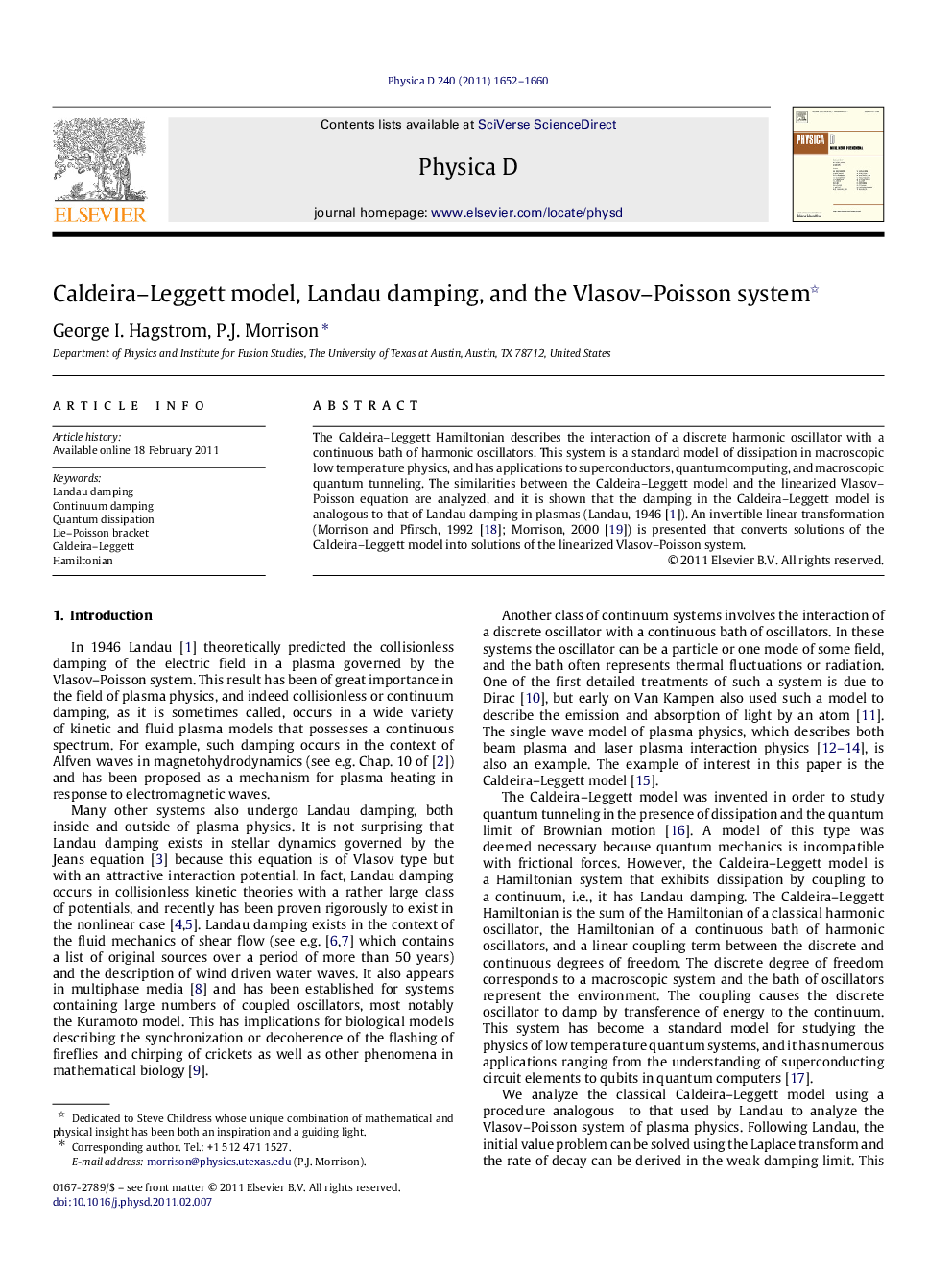| Article ID | Journal | Published Year | Pages | File Type |
|---|---|---|---|---|
| 1898633 | Physica D: Nonlinear Phenomena | 2011 | 9 Pages |
The Caldeira–Leggett Hamiltonian describes the interaction of a discrete harmonic oscillator with a continuous bath of harmonic oscillators. This system is a standard model of dissipation in macroscopic low temperature physics, and has applications to superconductors, quantum computing, and macroscopic quantum tunneling. The similarities between the Caldeira–Leggett model and the linearized Vlasov–Poisson equation are analyzed, and it is shown that the damping in the Caldeira–Leggett model is analogous to that of Landau damping in plasmas (Landau, 1946 [1]). An invertible linear transformation (Morrison and Pfirsch, 1992 [18]; Morrison, 2000 [19]) is presented that converts solutions of the Caldeira–Leggett model into solutions of the linearized Vlasov–Poisson system.
Research highlights► In this article we discuss Hamiltonian systems that exhibit continuum damping, specifically the Caldeira–Leggett model and the linearized Vlasov–Poisson equation. ► Damping in the Caldeira–Leggett model is derived by performing an analogue of the Laplace transform method used by Landau to study the linearized Vlasov–Poisson equation. ► An integral transformation that diagonalizes the Caldeira–Leggett model is introduced and its inverse given. ► This map is used to compare the Caldeira–Leggett and Vlasov–Poisson equations.
